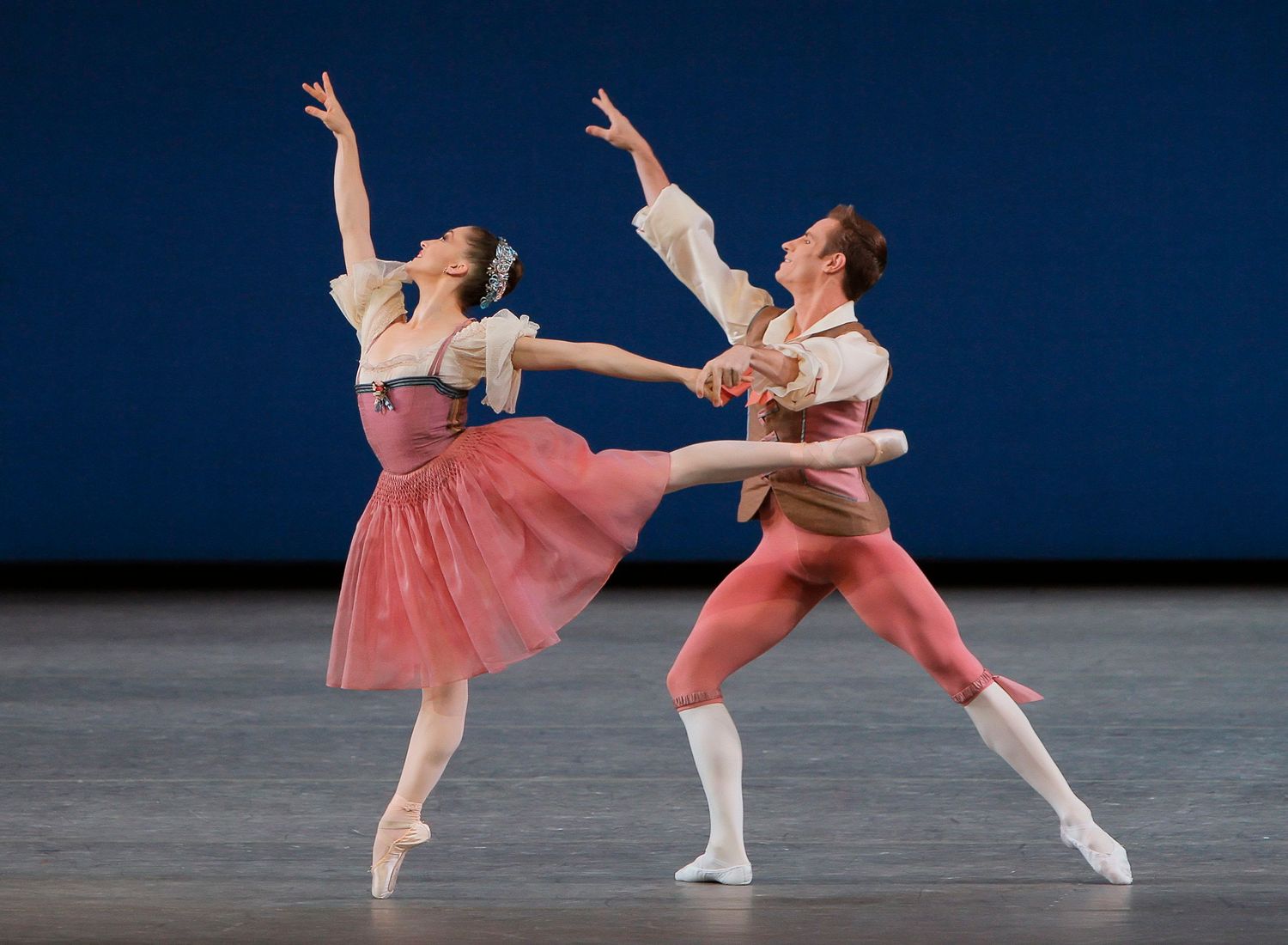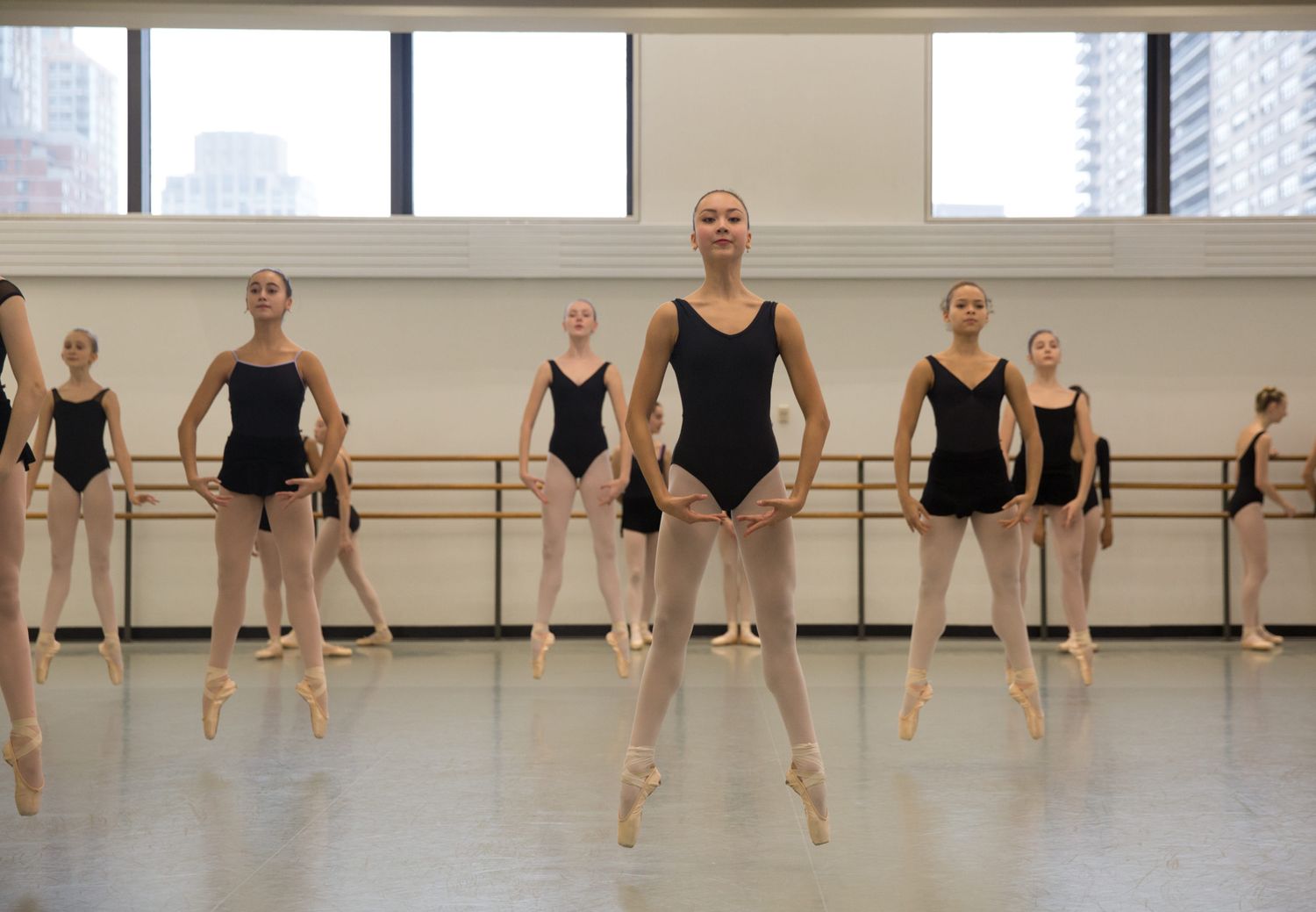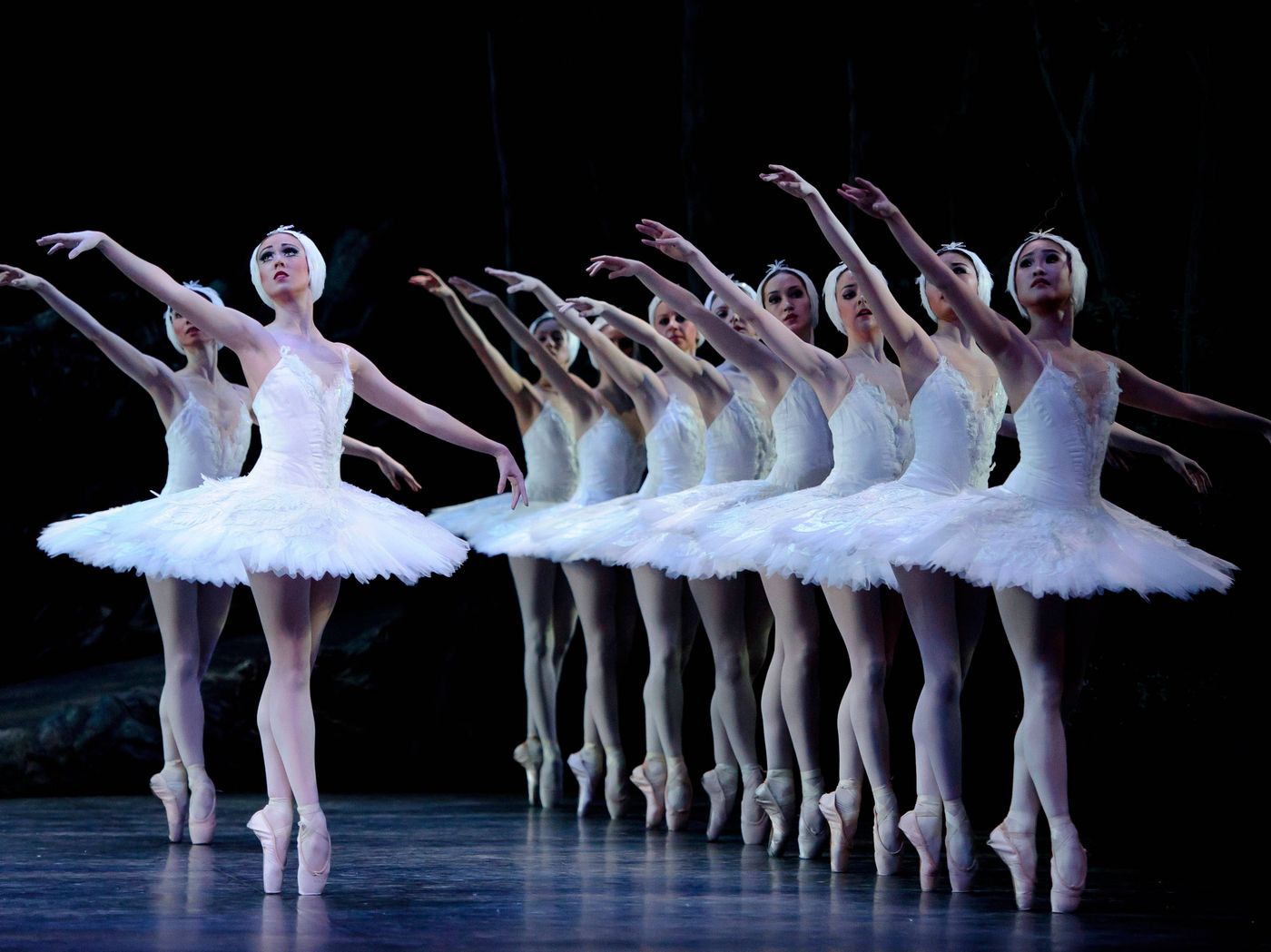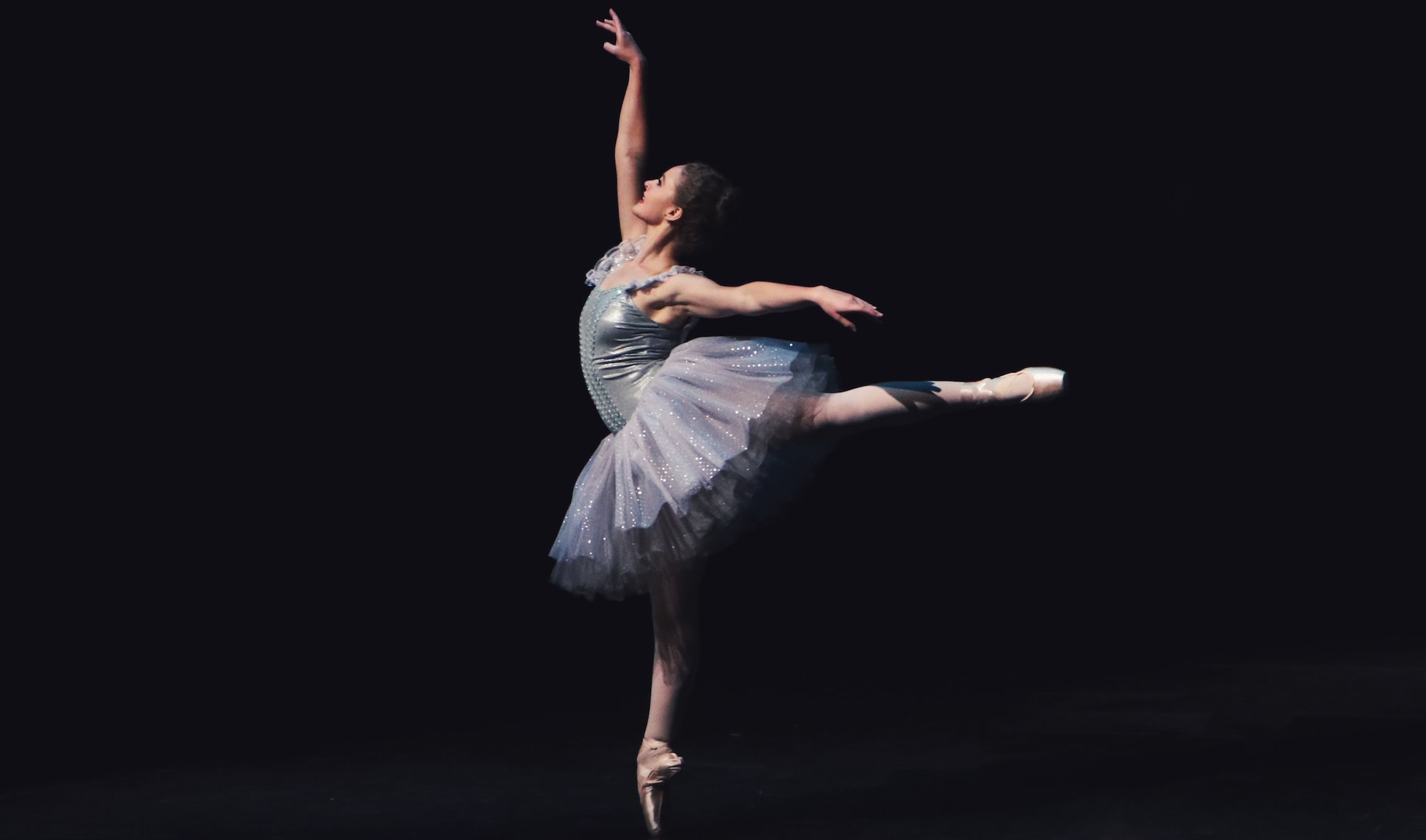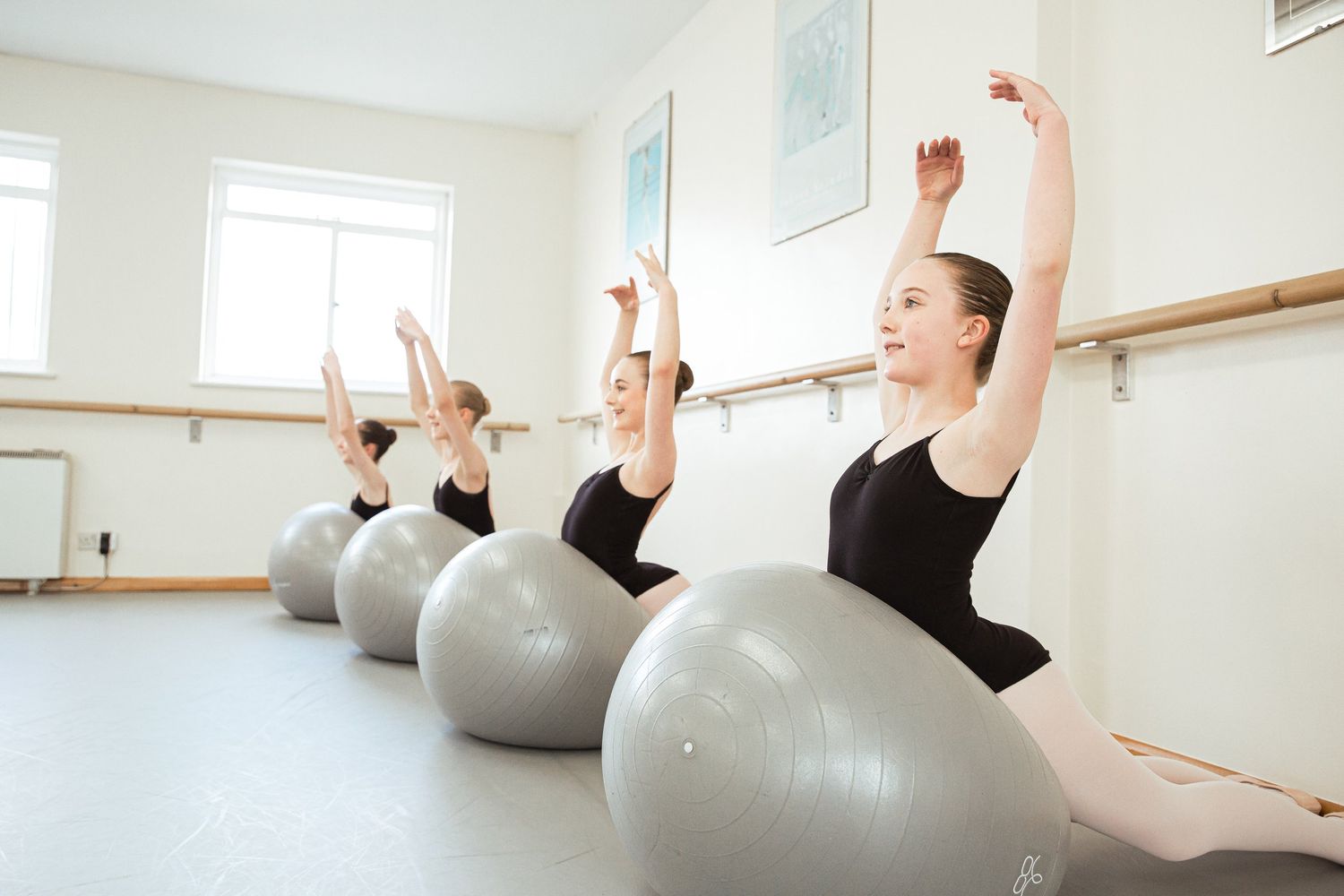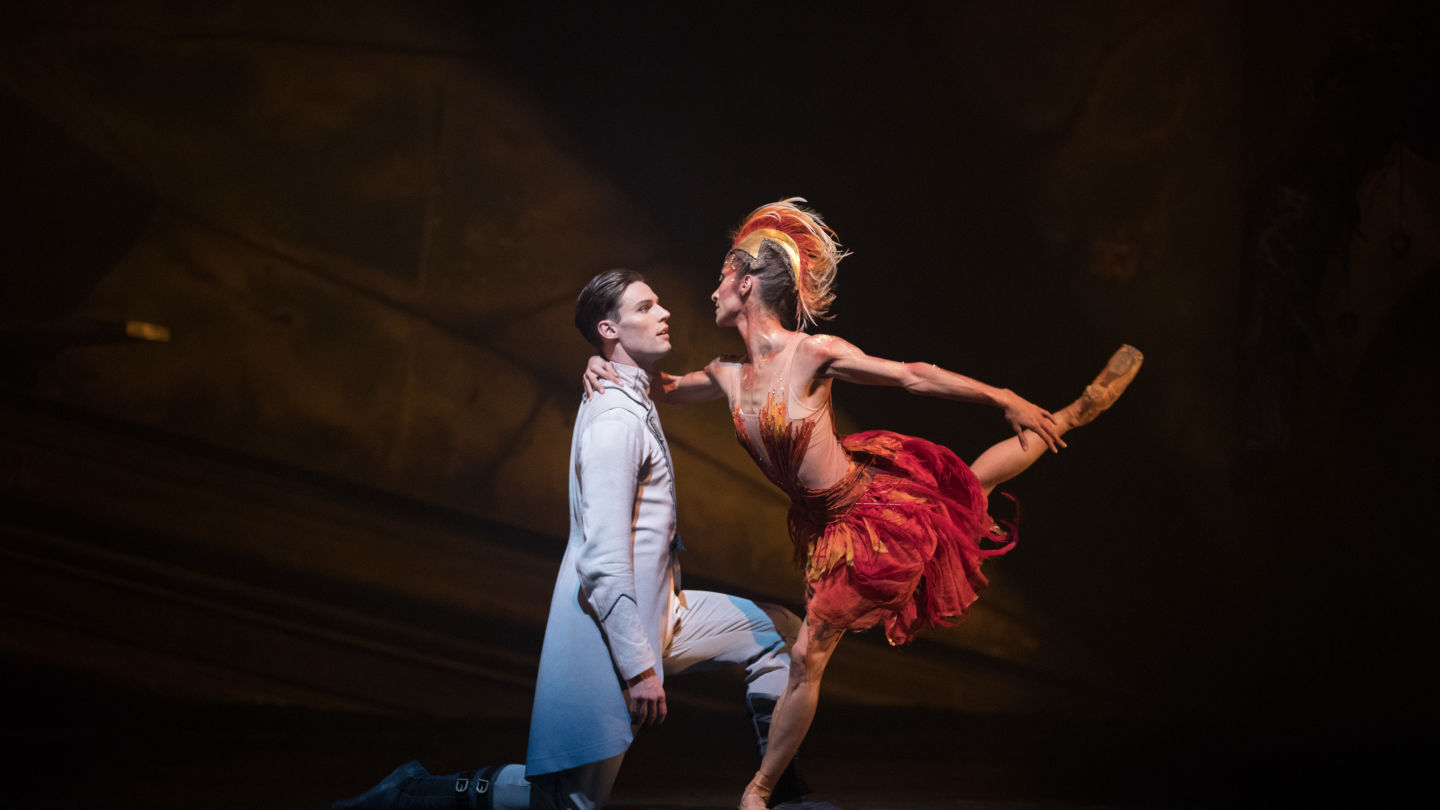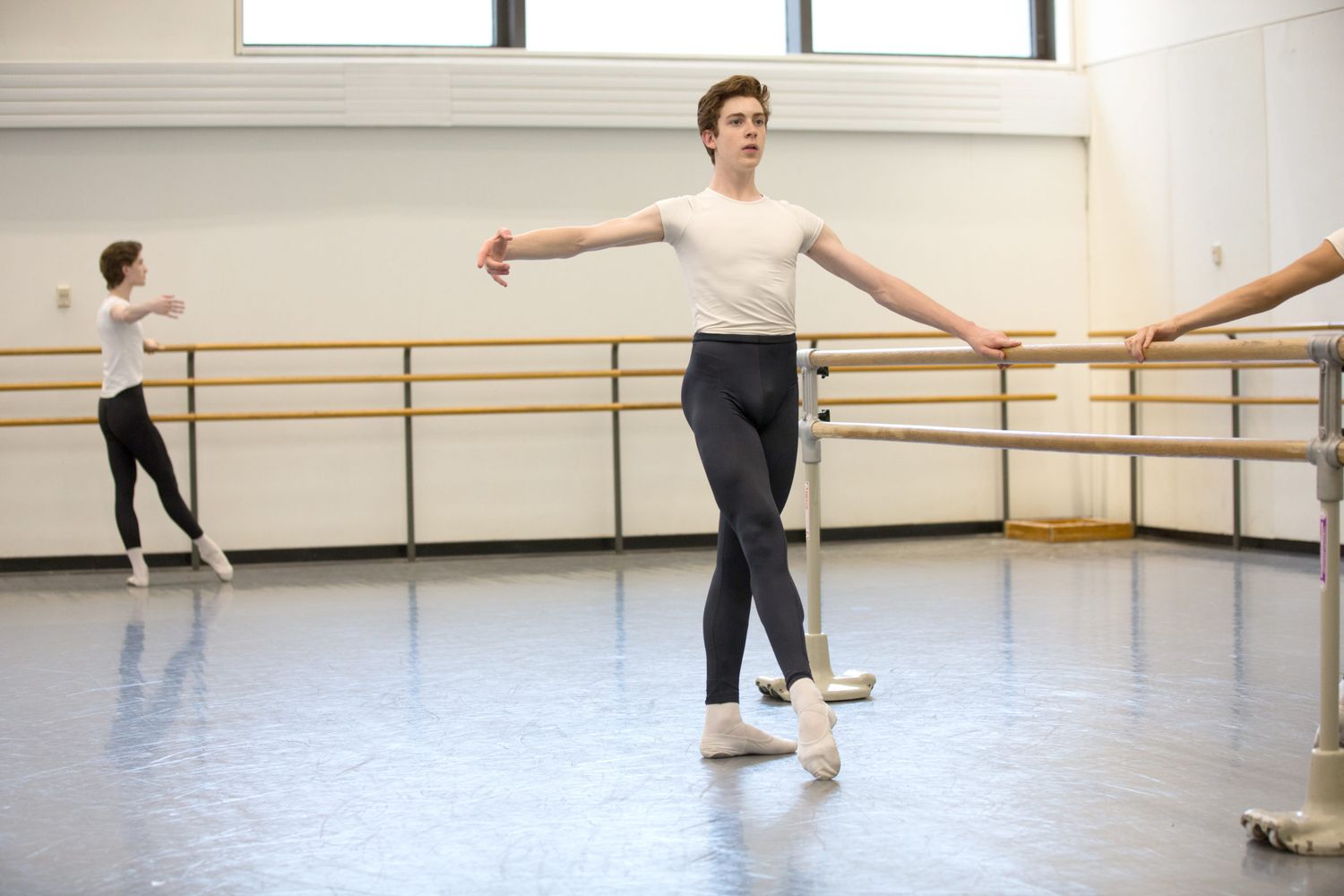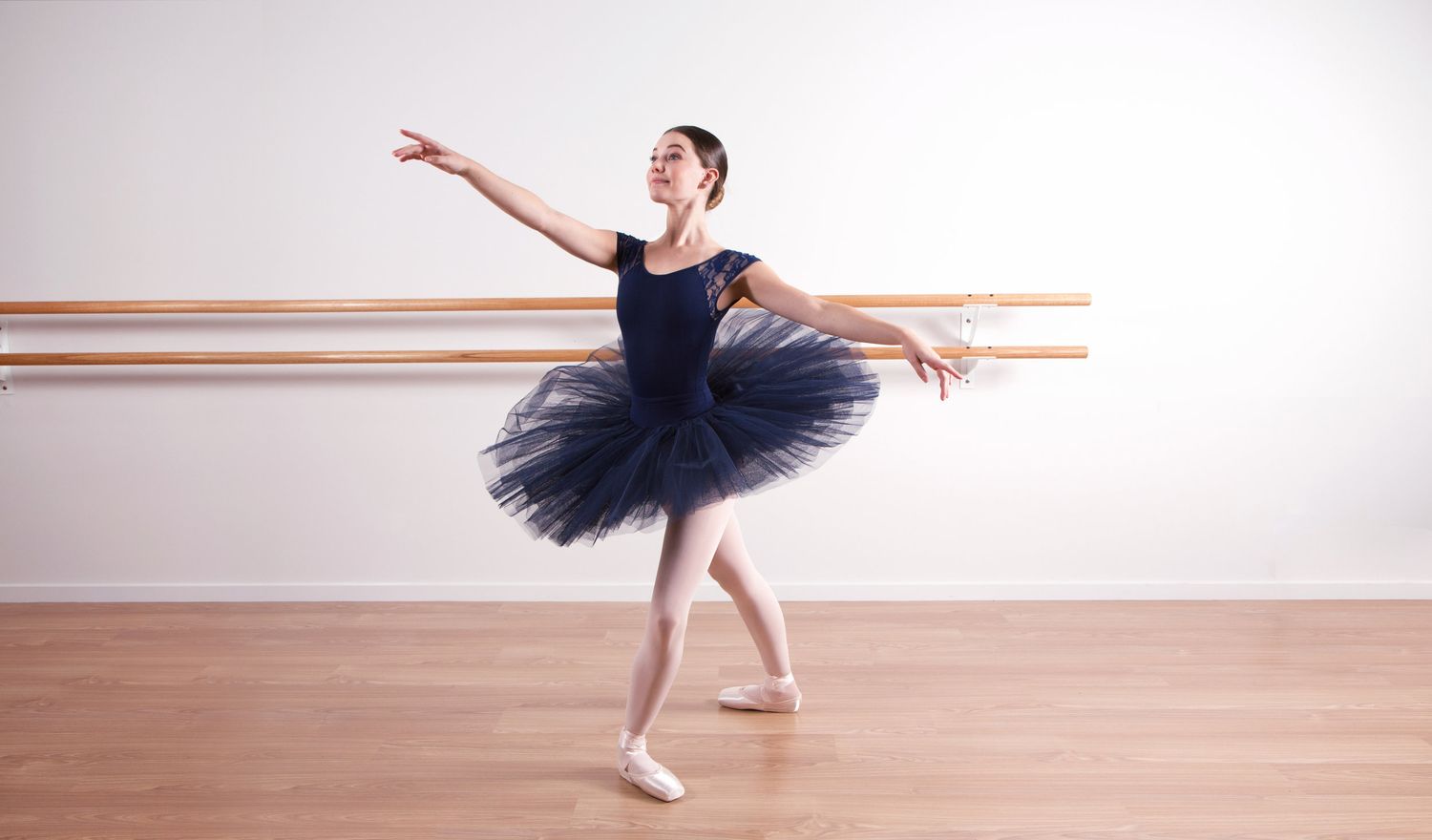Home>Events & Info>Ballet>What To Expect At Ballet Auditions
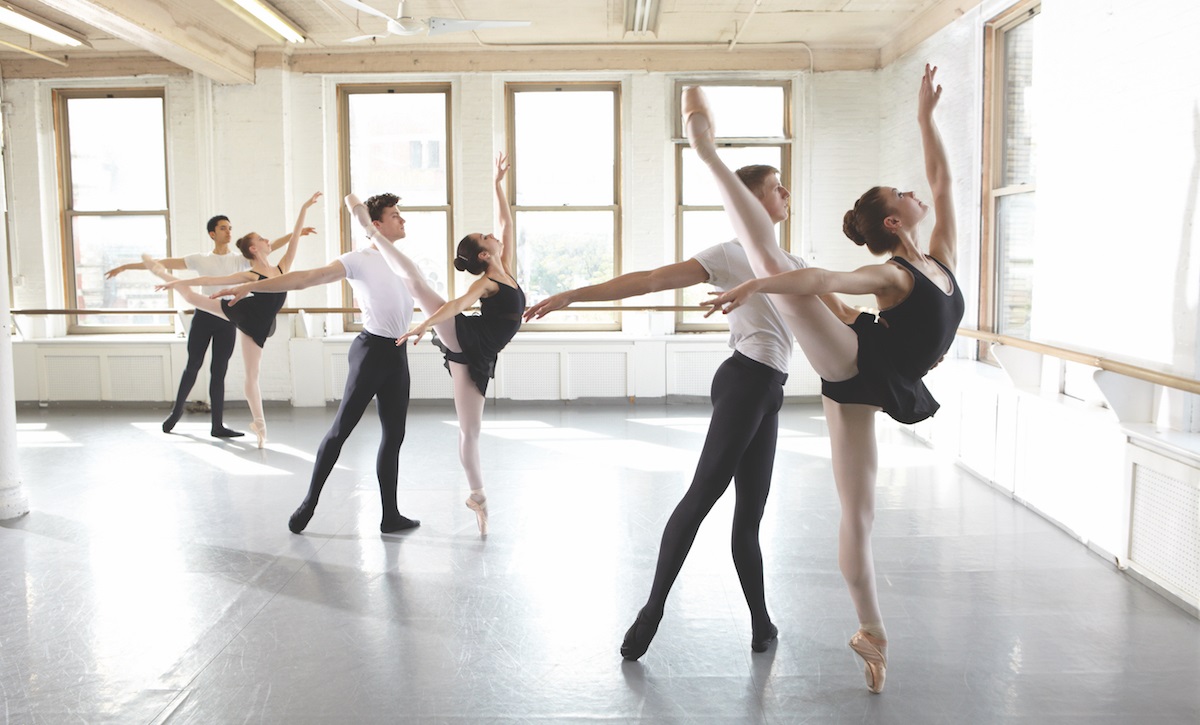

Ballet
What To Expect At Ballet Auditions
Modified: January 22, 2024
Discover what to expect at ballet auditions and get valuable insights on how to prepare for your big day. Learn about the audition process, requirements, and tips to showcase your ballet skills.
(Many of the links in this article redirect to a specific reviewed product. Your purchase of these products through affiliate links helps to generate commission for AudioLover.com, at no extra cost. Learn more)
Table of Contents
Introduction
Welcome to the world of ballet auditions! If you’re a dancer aspiring to join a ballet company or a ballet school, auditions are an essential step in your journey. Ballet auditions allow you to showcase your skills, technique, and artistry to a panel of professionals who are looking for the next talented dancer.
Preparing for a ballet audition can feel both exciting and nerve-wracking. You may be wondering what to expect, how to stand out, and what you should do to make the most of this opportunity. Fear not! In this article, we will guide you through the process of ballet auditions, from choosing the right audition to standing out and receiving feedback.
When it comes to ballet auditions, it’s essential to approach them with a positive mindset and a willingness to learn. Each audition is a chance for growth and to gain valuable experience regardless of the outcome. Remember that even the most accomplished ballet dancers have faced rejection at some point in their careers. So, embrace the journey and use every audition as an opportunity to grow and develop as a dancer.
Whether you’re auditioning for a professional ballet company or a prestigious ballet school, the principles we’ll discuss in this article apply to both. So, let’s dive into the world of ballet auditions and discover what awaits you!
Choosing an Audition
Choosing the right ballet audition is a crucial first step in the process. It’s important to research and find auditions that align with your goals, level of training, and artistic style. Here are a few factors to consider when selecting an audition:
- Company or School: Determine whether you’re interested in auditioning for a ballet company or a ballet school. Companies typically hold auditions for professional dancers, while schools may have auditions for pre-professional or student programs.
- Location: Consider the location of the audition. Are you willing and able to travel to that city or country? Keep in mind that some auditions may only occur in specific regions or during certain times of the year.
- Requirements: Read the audition requirements carefully. Some auditions may require a specific age, height, or years of training. Make sure you meet the qualifications before applying.
- Repertoire: Research the repertoire and artistic style of the company or school. Ensure that it aligns with your training and strengths as a dancer. Different companies and schools may have varying styles, such as classical ballet, contemporary, or neoclassical.
- Application Process: Understand the application process and any required materials, such as headshots, dance photos, or dance resumes. Follow the instructions provided and submit your application before the deadline.
By carefully considering these factors, you can narrow down your options and choose auditions that are the best fit for you. Remember, it’s not just about the prestige or reputation of the company or school; it’s about finding an audition that aligns with your training, goals, and artistic aspirations.
Preparing for the Audition
Preparation is key when it comes to ballet auditions. Here are some essential steps to follow as you prepare for your upcoming audition:
- Review the Requirements: Carefully review the audition requirements and take note of any specific pieces of repertoire, variations, or specific techniques that may be requested. Make sure you are familiar with them and spend time practicing accordingly.
- Physical Conditioning: Ballet is a demanding art form that requires strength, flexibility, and endurance. Take the time to engage in regular physical conditioning exercises to ensure your body is prepared for the demands of the audition. Focus on strengthening your core, improving your flexibility, and practicing ballet-specific exercises.
- Technique and Artistry: Work on refining your technique and artistry. Take classes regularly and focus on areas that need improvement. Seek feedback from teachers or mentors who can help you identify areas to focus on and provide guidance on how to enhance your performance.
- Practice Variations: If the audition requires you to perform specific variations, spend dedicated time practicing them. Pay attention to the details, musicality, and expression within the variation. Record yourself and analyze your performance, making adjustments as necessary.
- Seek Professional Guidance: Consider taking private lessons or seeking coaching from a qualified ballet instructor who can help you prepare for the audition. They can provide personalized feedback, correct any technical flaws, and guide you in mastering the required repertoire.
- Mental Preparation: In addition to physical preparation, be sure to focus on mental preparation. Practice visualization techniques to envision yourself successfully performing at the audition. Maintain a positive mindset and cultivate confidence in your abilities.
- Rest and Recovery: Give yourself time for rest and recovery leading up to the audition day. Getting enough sleep and allowing your body to recover will ensure you are in optimal condition on audition day.
Remember, preparation is a continuous process, and the more you invest in your training, the better equipped you will be to showcase your talents at the audition. Take advantage of every opportunity to grow and improve as a dancer. With dedication, hard work, and a positive mindset, you are ready to shine at your ballet audition!
Dress Code
When attending a ballet audition, it is essential to adhere to the prescribed dress code. Following the dress code not only shows respect for the audition panel but also allows them to assess your technique and alignment accurately. Here are some general guidelines to follow regarding the dress code for ballet auditions:
- Leotard and Tights: As a standard practice, wear a solid-colored leotard that flatters your body shape. Black, navy, or muted colors are commonly accepted. Opt for pink or flesh-toned tights that match your skin color. Ensure that your leotard fits well and allows for freedom of movement.
- Shoes: Female dancers should wear pink ballet shoes, while male dancers should wear black or white ballet shoes. Make sure your shoes are clean, in good condition, and properly sewn or elasticized.
- Hair: Hair should be neatly secured in a ballet bun or another appropriate hairstyle that keeps your face and neck visible. Avoid loose hair that may interfere with your movements or distract from your performance.
- No Jewelry: Remove all jewelry, including earrings, necklaces, bracelets, and rings. These can be a safety hazard and may distract from your dancing.
- Minimal Makeup: Keep your makeup simple and natural, emphasizing a clean and polished look. Avoid heavy or dramatic makeup that may distract from your facial expressions or give the impression of trying too hard.
- No Baggy Clothing: Avoid wearing baggy or loose-fitting clothing that can hinder the panel’s ability to assess your technique and alignment accurately. Choose clothing that showcases your physique and allows for ease of movement.
It’s important to note that some auditions may have specific dress code requirements, such as requesting a specific color leotard or additional attire like pointe shoes or character skirts. Always read the audition guidelines provided to ensure compliance with any specific dress requirements.
Adhering to the dress code demonstrates professionalism and respect for the art form and the audition process. It allows the panel to focus on your dance abilities and technique without being distracted by inappropriate attire. So, dress appropriately, present yourself with confidence, and let your dancing speak for itself!
Arrival and Sign-In
Arriving early and properly signing in at a ballet audition is crucial for a smooth and organized process. Follow these guidelines to ensure a successful arrival and sign-in:
- Plan your Journey: Determine the location of the audition venue and plan your travel accordingly. Account for potential traffic or transportation delays to ensure you arrive punctually.
- Arrive Early: Aim to arrive at least 15-30 minutes before the designated start time. This allows you to settle in, mentally and physically prepare, and complete any necessary paperwork or registration requirements.
- Packing Essentials: Bring a bag with essentials such as water, light snacks, extra ballet shoes, and any required paperwork or identification. It’s always better to be prepared for unforeseen circumstances.
- Check-In Process: Upon arrival, locate the designated check-in area. This may involve providing identification, completing registration forms, and collecting any audition numbers or identification badges that may be required.
- Follow Instructions: Pay close attention to any instructions provided by the audition staff. They may provide specific information regarding the order of auditions, warm-up areas, or any last-minute changes or updates.
- Be Respectful and Courteous: Treat the audition staff, other dancers, and fellow participants with respect and courtesy. Remember that auditions can be nerve-wracking for everyone, so maintaining a positive and supportive atmosphere is essential.
- Familiarize Yourself with the Space: Once you have checked in, take a moment to familiarize yourself with the audition space. Locate changing rooms, restrooms, warm-up areas, and any designated waiting areas.
- Warm-Up: Use the provided warm-up time wisely. Engage in gentle stretches, exercises, and techniques to prepare your body for the audition. Avoid overexertion or attempting new or unfamiliar movements that may risk injury.
- Maintain a Positive Mindset: Stay focused, calm, and positive as you wait for your audition. Avoid comparing yourself to other dancers, as each person’s journey is unique. Use the waiting time to mentally prepare and visualize your successful performance.
By arriving early, completing the sign-in process efficiently, and maintaining a positive and professional attitude, you set yourself up for a successful and smooth audition experience. This allows you to fully focus on showcasing your talent and enjoying the process. Good luck!
Warm-Up
The warm-up period before a ballet audition is crucial for preparing your body and mind for the physical demands of the upcoming class or performance. Properly warming up helps prevent injuries, improves flexibility, and allows you to perform at your best. Here are some essential guidelines to follow during the warm-up process:
- Start with Cardiovascular Exercise: Begin your warm-up with light cardiovascular exercises, such as jogging, brisk walking, or cycling, to get your heart rate up and increase blood flow to your muscles.
- Joint Mobility and Stretching: Gradually move into joint mobility exercises to warm up your joints and improve range of motion. Perform gentle stretches focusing on key areas for ballet, such as the legs, hips, back, and shoulders.
- Pliés and Tendus: Incorporate plié and tendu exercises to further warm up your legs, feet, and ankles. Pay attention to proper alignment and engage your core muscles for stability.
- Port de Bras: Include port de bras exercises to warm up and mobilize your upper body. Focus on fluidity, gracefulness, and maintaining proper alignment throughout the movements.
- Jumping and Allegro Exercises: Gradually introduce small allegro movements and jumps to warm up your legs and feet. Start with smaller and simpler jumps and gradually increase intensity and complexity as your body warms up.
- Focus on Technique: Use the warm-up period to focus on specific ballet techniques you anticipate will be included in the audition. This will help you align your body, refine your technique, and enhance your muscle memory before the actual audition begins.
- Breathing and Mental Preparation: Take deep breaths to calm your nerves and mentally prepare for the audition. Visualize yourself performing with confidence and grace, and maintain a positive mindset throughout the warm-up process.
- Stay Hydrated: Remember to hydrate adequately before and during the warm-up. Have water readily available to prevent dehydration, as intense physical activity can cause perspiration.
Remember, the warm-up period is crucial for preparing your body and mind. It is not the time to push yourself to the limit or attempt new and risky movements. Listen to your body, and if something feels uncomfortable or painful, adjust or modify the exercise accordingly. Your warm-up should leave you feeling energized, prepared, and primed for a successful audition. Good luck!
Audition Class
The audition class is the central component of a ballet audition. It is your opportunity to showcase your technical skills, artistic expression, and ability to adapt to different styles and teaching methods. Here’s what you can expect during the audition class:
Please note that the specific format of an audition class can vary depending on the organization or school conducting the audition. The following information provides a general overview.
- Class Structure: The audition class typically follows a traditional ballet class structure, including a warm-up, barre exercises, center work, and across-the-floor combinations. The class may consist of both classical ballet exercises as well as contemporary or modern dance elements.
- Warm-Up: The warm-up segment helps to further prepare your body for the class. It may include pliés, tendus, dégagés, and other exercises to improve alignment, coordination, and flexibility.
- Barre Work: You will likely perform a series of exercises at the barre, including tendus, pliés, ronds de jambe, and more. Pay close attention to technique, alignment, and execution as you demonstrate your ability to execute proper ballet fundamentals.
- Center Work: In the center, you will participate in a series of movements, such as adagio, turns, jumps, and petite allegro. This portion of the audition allows you to showcase your strength, balance, musicality, and artistry.
- Across-the-Floor Combinations: You may be asked to perform traveling steps across the floor, such as leaps, turns, or combinations that demonstrate your ability to execute complex movements with technical proficiency and grace.
- Adaptability: Be prepared to adapt to different teaching styles and combinations. The instructor may introduce unfamiliar steps or combinations to assess your ability to quickly learn and apply new choreography.
- Artistic Expression: While technique is crucial, remember to express yourself and convey your artistry throughout the audition class. Engage with the music, demonstrate personality, and let your passion for dance shine.
- Attention to Detail: Pay attention to the details. Focus on proper body alignment, precise footwork, clean lines, and controlled movements. Strive for excellence in every aspect of your performance.
- Observe and Follow Directions: Throughout the class, be attentive to the instructions given by the instructor. Listen carefully and follow directions promptly. This aspect showcases your ability to work well in a structured and disciplined environment.
Remember that the audition class is not just a test of your technical abilities but also an opportunity to demonstrate your passion, dedication, and ability to adapt. Approach the class with confidence, perseverance, and a positive mindset. Embrace the opportunity to learn, grow, and showcase your unique abilities as a ballet dancer. Good luck!
Solo Performance
The solo performance is a chance for you to truly shine and showcase your individuality as a dancer during a ballet audition. It allows you to demonstrate your artistry, musicality, and the unique strengths that set you apart from other candidates. Here’s how to make the most of your solo performance:
- Choose a Suitable Variation: Select a variation or piece that showcases your strengths and abilities as a dancer. Consider the style, technical demands, and artistic expression of the piece you choose.
- Maintain Authenticity: While it’s important to impress the audition panel, remember to stay true to yourself and dance with authenticity. Showcase your unique artistic voice and bring your personality to the performance.
- Focus on Technique: Pay close attention to your technique throughout the solo. Execute each movement with precision, control, and proper alignment. Strive for clean footwork, fluid transitions, and strong musicality.
- Express Emotion: Connect with the music and infuse your solo with genuine emotion. Use facial expressions and body language to convey the story or mood of the dance. Embrace the opportunity to captivate the audience and the audition panel through your expressive performance.
- Showcase Artistry: Demonstrate your artistry by highlighting your strengths and displaying your interpretation of the choreography. Use fluid transitions, graceful movements, and attention to detail to showcase your artistic sensibilities.
- Engage with the Panel: Maintain eye contact with the audition panel throughout your solo performance. Engage with them, showing your confidence and connection with the audience. Remember, your performance is not just about the technical aspects but also about capturing the attention and interest of those who are watching.
- Stay Present and Confident: Focus on the present moment and avoid getting caught up in any mistakes or mishaps. Maintain confidence, even if you stumble or make a small error. Stay composed and continue with grace, as recovery is part of being a professional dancer.
- Practice and Rehearse: Prioritize ample practice and rehearsal time for your solo. This ensures you feel comfortable and confident with the choreography, allowing you to perform at your best during the audition.
Remember, the solo performance is an opportunity for you to make a lasting impression on the audition panel. It’s your chance to showcase your technical abilities, artistic expression, and passion for ballet. Embrace the moment, perform with confidence and authenticity, and let your talent shine through your solo performance. Good luck!
Standing Out
In a competitive ballet audition, it is crucial to find ways to stand out from the other candidates and leave a lasting impression on the audition panel. Here are some key strategies to help you stand out during your ballet audition:
- Showcase Your Strengths: Highlight your unique strengths and abilities as a dancer. Whether it’s your exceptional technique, expressive artistry, or stellar musicality, find opportunities within the audition to showcase what sets you apart.
- Bring Confidence: Approach the audition with confidence, poise, and a positive attitude. Show the panel that you believe in yourself and your abilities as a dancer. Confidence can greatly enhance your performance and help you stand out in the crowd.
- Display Versatility: Demonstrate your versatility as a dancer by adapting to different styles, techniques, and choreography. Be open and willing to explore new movements and show the panel that you can handle a wide range of dance styles and challenges.
- Take Risks: Dare to take risks and push yourself beyond your comfort zone during the audition. Show the panel that you are willing to step outside of the familiar and embrace challenges. Impress them with your willingness to tackle difficult movements or showcase your unique artistic vision.
- Show Passion and Emotion: Infuse your performance with genuine passion, emotion, and artistry. Connect with the music, tell a compelling story, and let your emotions shine through your performance. This can captivate the panel and make you memorable.
- Display Professionalism: Conduct yourself with professionalism throughout the audition process. Maintain a positive and respectful attitude towards the panel and your fellow dancers. Show that you take the audition seriously and that you are dedicated to your craft.
- Pay Attention to Details: Be meticulous in your execution of technique, lines, and coordination. Focus on small details that can elevate your performance, such as pointed feet, graceful arm movements, and clean transitions. Attention to detail can make a significant difference in standing out.
- Engage with Others: Interact positively with the panel, staff, and other candidates. Engage in a supportive and collaborative manner, showing that you are a team player who can work well with others. This positive attitude can leave a lasting impression.
- Be Authentic: Stay true to yourself and your unique artistry. Embrace your individuality and let it shine through your performance. Being authentic allows you to present your best self and stand out in a genuine and memorable way.
Remember, standing out in a ballet audition is not just about technical proficiency, but also about showcasing your personality, artistry, and individuality as a dancer. Find ways to make your performance memorable, and let your love and passion for dance shine through. Be confident, take risks, and embrace the opportunity to leave a lasting impression on the audition panel. Good luck!
Q&A and Feedback
At the end of a ballet audition, there is often an opportunity for dancers to ask questions or receive feedback from the audition panel. This segment is valuable and can provide valuable insights into your audition performance. Here’s what you can expect during the Q&A and feedback session:
- Questions and Clarifications: The panel may invite you to ask any questions or seek clarifications regarding the audition process, company policies, or training programs. Prepare a few thoughtful questions in advance to show your genuine interest and engagement.
- Solicit Feedback: If given the chance, inquire about receiving feedback on your audition performance. Ask the panel for specific areas of improvement or ways to enhance your technique or artistry. This feedback can be instrumental in your growth as a dancer.
- Active Listening: When feedback is provided, actively listen and absorb the information. Maintain a positive and open-minded approach, even if the feedback includes constructive criticism. Use the feedback as an opportunity for growth and self-improvement.
- Take Notes: Consider bringing a notebook and pen to jot down any feedback or important points mentioned during the Q&A session. These notes can serve as a valuable reference for future auditions or training.
- Show Gratitude: Express your gratitude to the panel for the opportunity to audition and any feedback provided. A simple thank you gesture can leave a positive impression and show your professionalism.
- Reflect on Feedback: Take time to reflect on the feedback received after the audition. Consider how you can incorporate any suggestions or areas for improvement into your future training and performances. Use the feedback as motivation to continue growing as a dancer.
- Continue Learning: Remember that feedback from a single audition does not define your entire dancing journey. Use the feedback as a learning tool and continue seeking opportunities for growth, whether through training programs, workshops, or further education.
It is worth noting that not all auditions provide a formal Q&A or feedback session. In some cases, the panel may choose to provide feedback privately or not at all. Regardless, it is important to approach every audition with a growth mindset and be open to continuous improvement.
The Q&A and feedback segment of a ballet audition can be insightful, encouraging, and enlightening. Embrace this opportunity to gain valuable insights, refine your skills, and continue progressing in your ballet journey. Always remember that feedback is a valuable tool for growth, and each audition experience can contribute to your development as a dancer.
Conclusion
Participating in ballet auditions can be an exciting and challenging experience for dancers. It is a chance to showcase your skills, artistry, and passion for dance while pursuing your dreams of joining a ballet company or school. Throughout the audition process, it’s important to approach each step with preparation, confidence, and a positive mindset.
In this article, we’ve explored the various aspects of ballet auditions, including choosing the right audition, preparing yourself physically and mentally, adhering to the dress code, and making a memorable impression. We’ve discussed the importance of standing out by showcasing your strengths, embracing versatility, and expressing your unique artistry. Moreover, we’ve emphasized the significance of seeking feedback and using it to fuel your growth as a dancer.
Remember that ballet auditions are not just about the outcome. Every audition is an opportunity to learn, grow, and gain valuable experience. Each step of the process, from the warm-up to the solo performance, allows you to demonstrate your talent and dedication to the art form.
As you navigate the world of ballet auditions, stay focused, dedicated, and resilient. Embrace the challenges, learn from each audition experience, and continue honing your craft. Celebrate both the successes and the setbacks, for they are all part of your journey as a dancer.
Keep pursuing your passion, seeking opportunities to learn and improve, and never lose sight of the joy that ballet brings to your life. You have the ability to make a unique and lasting impact through your artistry and dedication to ballet. Trust in your abilities, believe in yourself, and never stop dreaming.
Good luck with your future ballet auditions, and may your journey be filled with growth, fulfillment, and the joy of dance.

